Having already spent some 6 hours aboard the Pogo 40 racing yacht sprinting from Bremerhaven to the Island of Helgoland – Germany´s one and only offshore island – the day before I was so keen on getting the sails hoisted again the next day for the leg back to Cuxhaven, a small town situated right at the southern shore of the entrance to the estuary of Hamburg´s mighty river Elbe. Along with me I´ve had a fellow crew of four people and our great skipper Michael. You may read about the first 50 miles racing down in under 7 hours here.
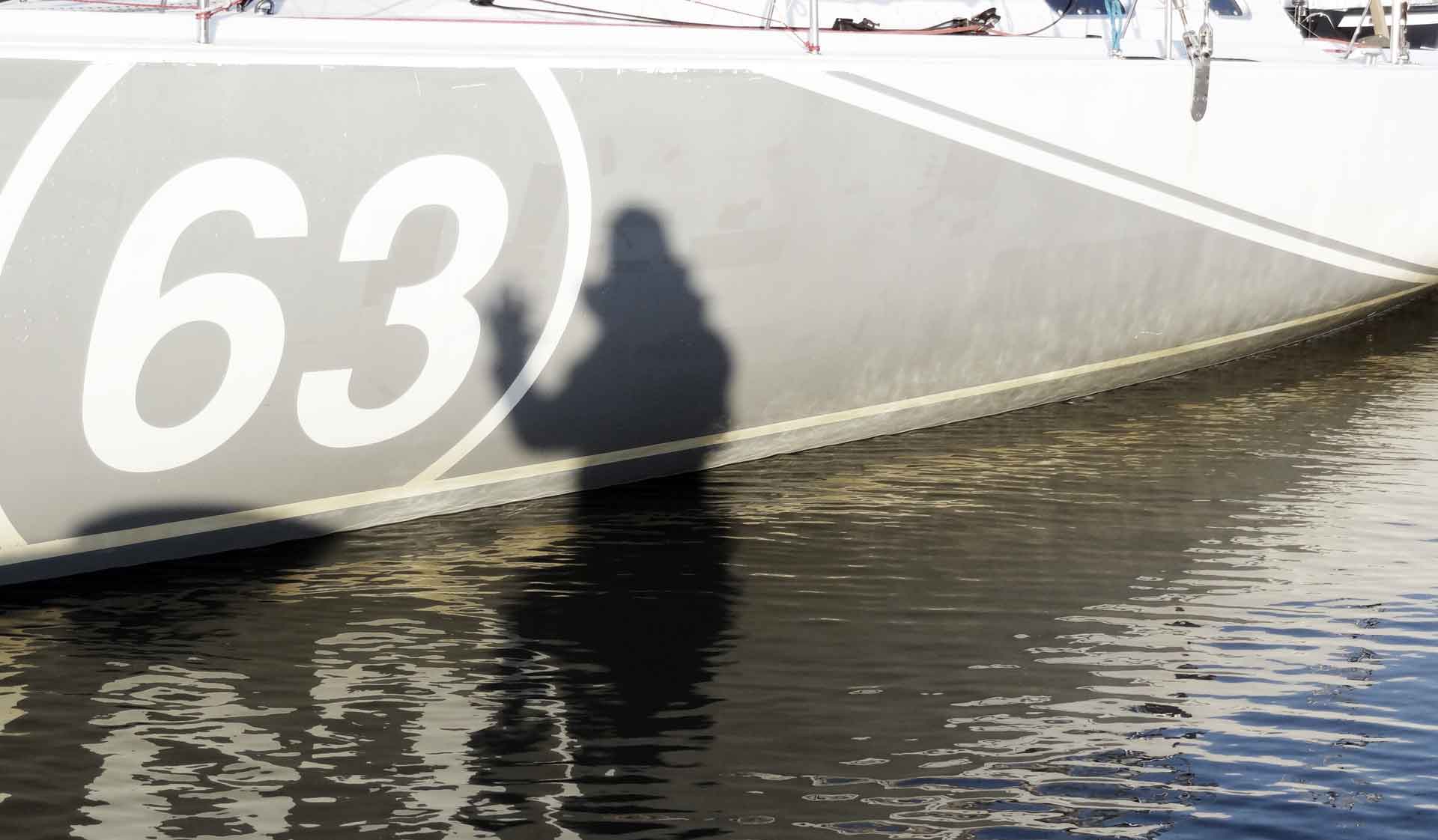
Some 4 hours after leaving Helgoland marina we finally arrived in Cuxhaven and as the sun already went down we prepared the boat for another night as we all had booked 3 days onboard this marvelous ship. It was such a sensation, a feeling of deep satisfaction and still pins and needles when I looked at the sleek hull of the boat. Like a racing car or a Leppard ready to jump to his prey – it was such a fun again riding the Pogo, which this story is all about.
Sailing into Cuxhaven Marina
With a great “Hello!” we´ve had a triumphant entry into the marina again after taking down the sails running under engine. Why? Simply because we again managed to be faster than our sister ship, Pogo 2, as she was also running with five crew members and fellow skipper Pauli. She was hopefully some 20 minutes behind us and we knew it. Cheerful as ever and with high spirits we steamed down the marina. We´ve had an old German hit on our lips, singing “Kleine Möwe, flieg nach Helgoland.” (“Little seagull fly to Heloland”).
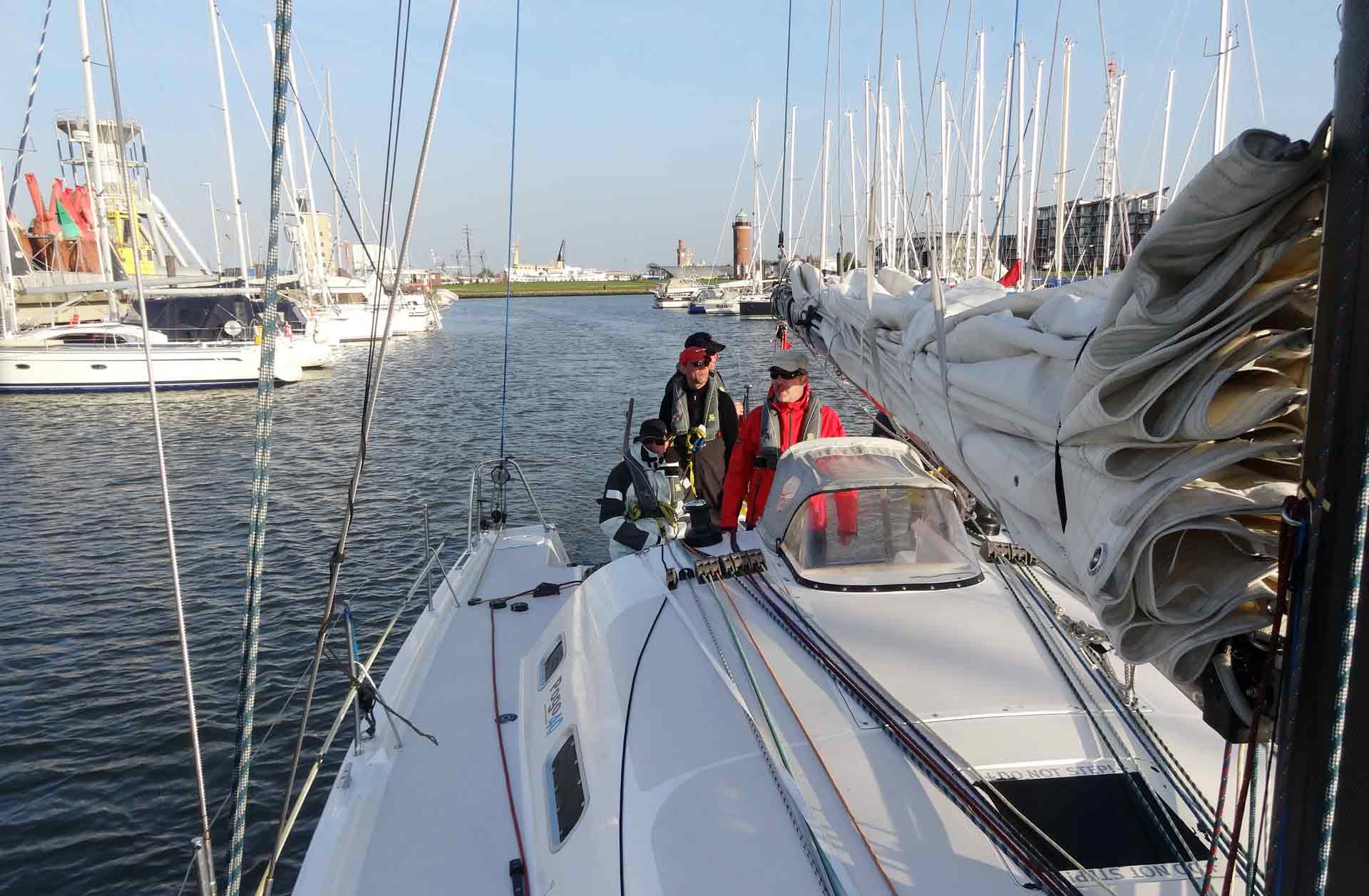
Sailing from Helgoland to Cuxhaven wasn´t that long leg and from a distance point-of-view not comparable to yesterday´s run of some 50 miles. Helgoland-Cuxhaven comprises “only” some 35 miles which took not as much time as yesterday: To make matters worse, we´ve had far less winds than yesterday. We all hoped for stronger winds because a Pogo is made for sailing fast and we wanted to sail fast, faster than yesterday especially because today we´ve had a very favourable point of sail as predicted by the forecasts: Broad reach, Pogo´s speciality.
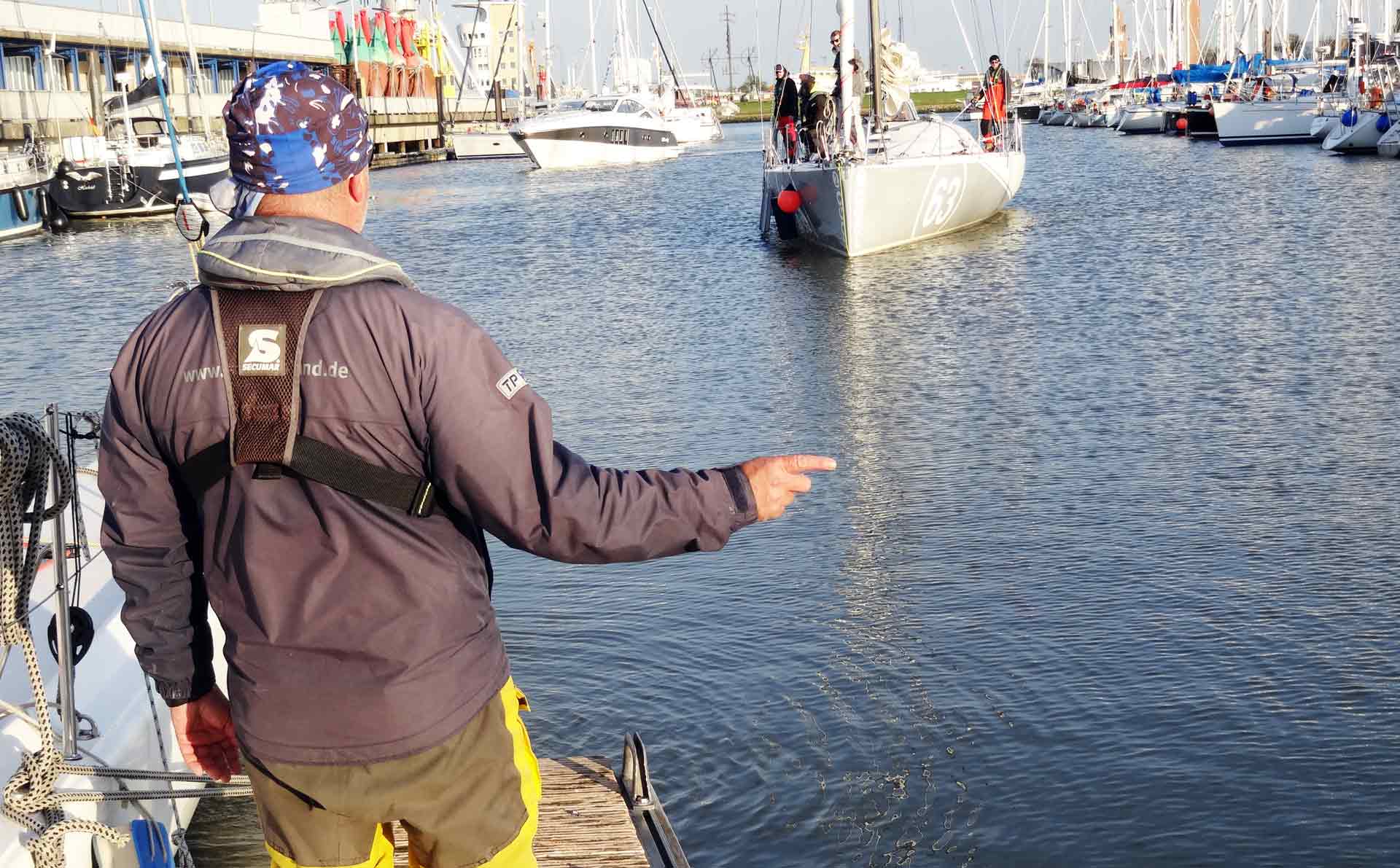
Well, we didn´t get winds stronger than a Beaufort 3 and more than 15 knots of wind – in the end of the day. When we started our trip it began with mere calmly conditions and winds of not more than 6 knots true which was a bit disappointing at first but conditions gradually improved reaching quite satisfactory windspeeds in the end. Nevertheless – we have been able to sail faster than Pogo 2 and that was cool. Also cool was the fact, that today we´ve had the joy of having a truly interesting, inspiring and eyebrow-raising lesson in clever sailing – but later more. As Pogo 2 finally entered the marina we were cheering her crew and helped landing by taking on her ropes.
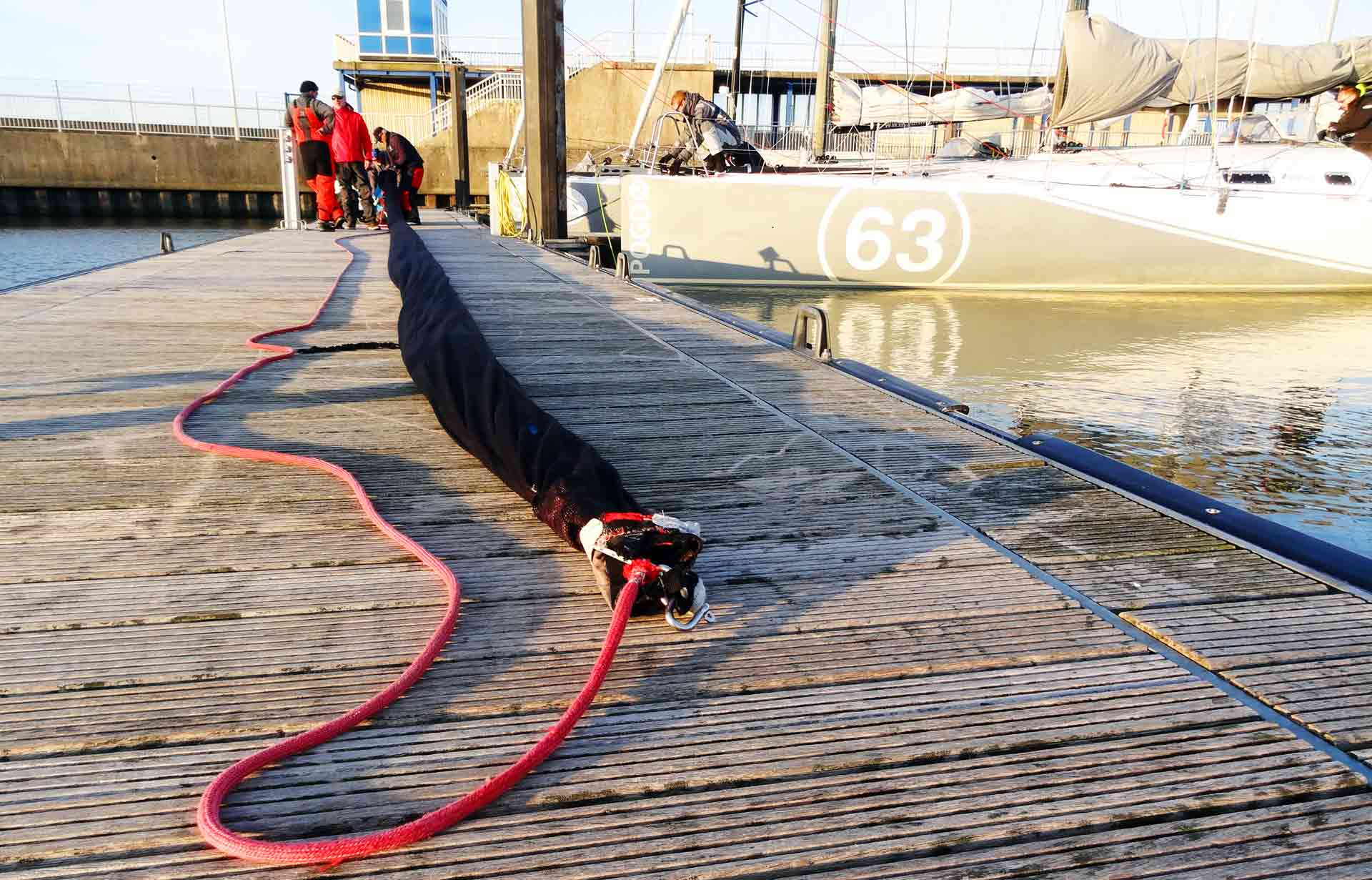
Upon arrival and mooring Pogo 2 safely some of us began to pack the main sail, clean the ship and do all the stuff that needs to be done when arriving and some of us stowed accurately the Gennaker sails we´ve had in use for most of this day´s sailing time. As we had experienced earlier the day it´s essential to pack a Gennaker with care since if it had been done poorly (as it was the case with our Gennaker) hoisting it and bringing it to the wind can cause big problems. And you don´t want to have problems with hoisting or taking down sails underway. Again, Michael our skipper despite being a strategically superior sailor also proved to be a good teacher to give practical hints and examples how to fold the huge sail to be hoisted with ease and beauty the next time.
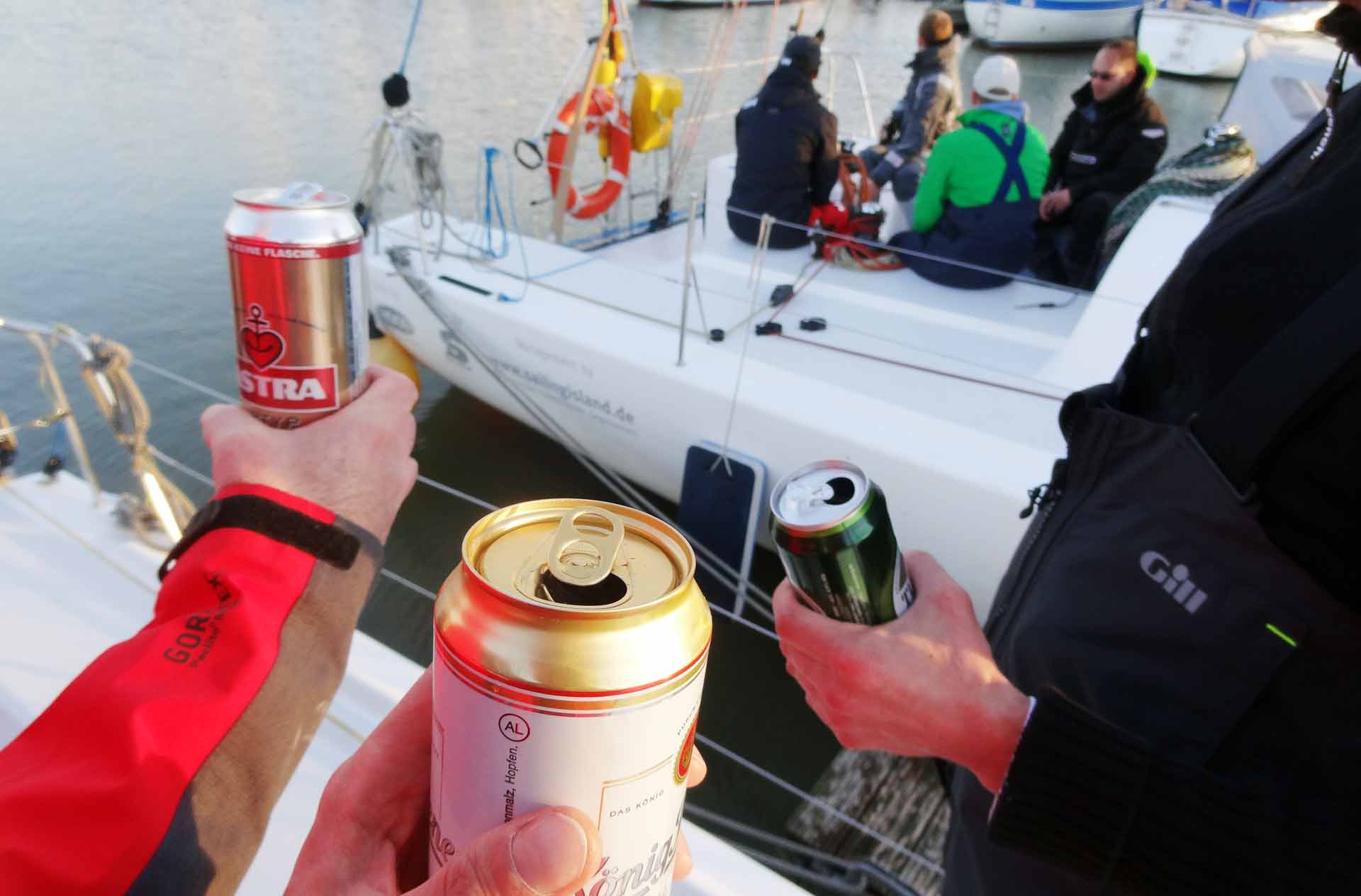
After work was done – a matter of some 15 minutes when 11 adults are working together as a team we raised our cans of ice cold beers I took out of the huge fridge down in the cabin of our ship and brought out a toast to the Pogo, her skippers and another great, inspiring and adventurous day of sailing the North Sea. We all have been a little sad as well: We knew that our sailing time – despite having another 4 or 5 hours tomorrow on River Elbe – was up. Talking about the day, still fresh have been the impressions of the last hour almost running before the wind on River Elbe …
Fast Sailing & Traffic on River Elbe
I must admit that I have been a little tired when Pogo 1 finally entered the waters of the river. Though just having done some 35 miles today it seemed that sailing today was more stressful than yesterday with almost double the distance was at hand. Why? Yesterday it was a close reach course all the time. We just had to apply minor corrections to our sail trim and despite two tacks no maneuvers at all demanded our crew´s attention. With having some 30 minutes at the helm upon being relieved of one´s watch sailing wasn´t that demanding. Quite different from today´s leg.
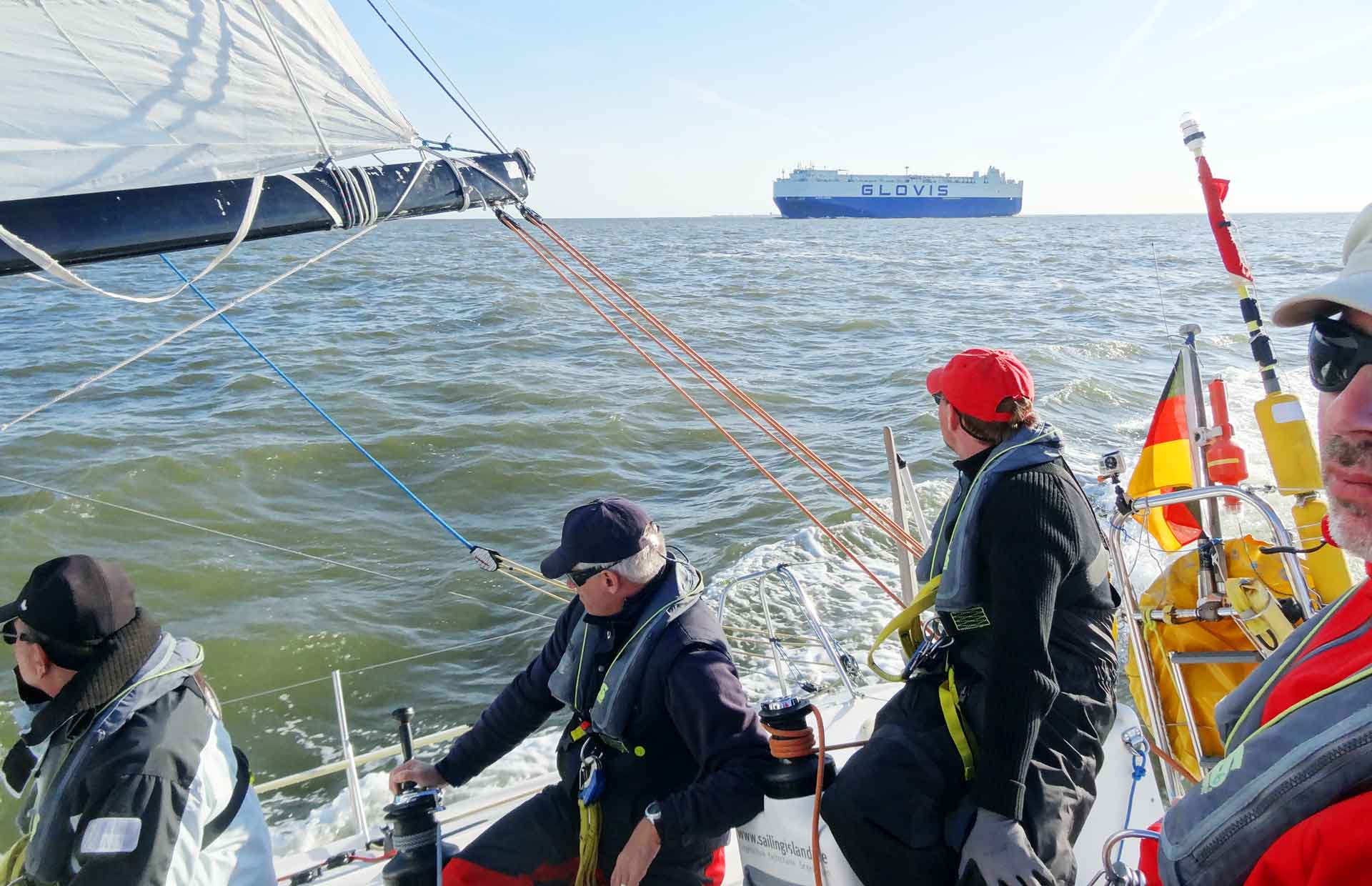
As I mentioned in one of my previous cruise reports the River Elbe is a tricky sailing area: It´s a tidal water body, so arriving at the right time is crucial. I somewhere read that some 10.000 Ships come down and up the river each year which would mean that there is a great chance of big time traffic at any day- or nighttime when sailing on these waters. And I mean real heavy traffic. Same with today: Just as we entered the waterway with commercial traffic having right of way at any time we got confronted with freighters both steaming up and down the river. Stressful sailing.
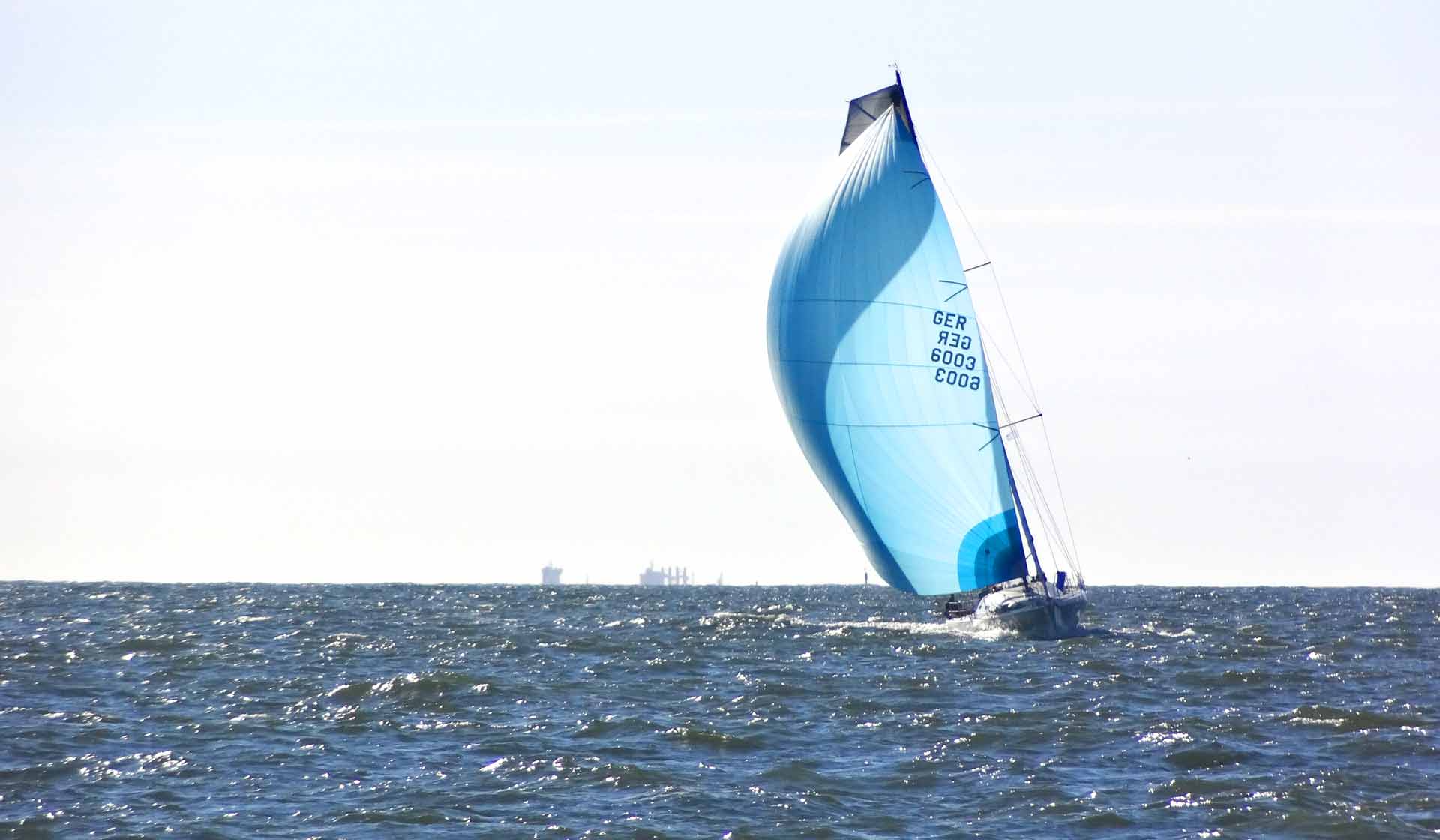
Despite the fact that we had the responsibility to keep clear of the traffic, avoid standing bearings and give way in advance we too had to stay inside the buoy-lines as the Elbe is blotched with tricky shallows ready to put an end to our cruise at an instance as our fine boat bears a draft of 2.20 meters. Also, controlling our huge Gennaker – as winds continued to freshen up steadily – proved to get increasingly difficult. And to spice things a up a bit, knowing our adversary Pogo 2 in our wake desperately trying to make good some distance it was a matter of honor not to put our lead to jeopardy. The last miles I was bowman responsible for the Gennaker with Peter being at the helm. It was real hard work – fun, but really demanding.
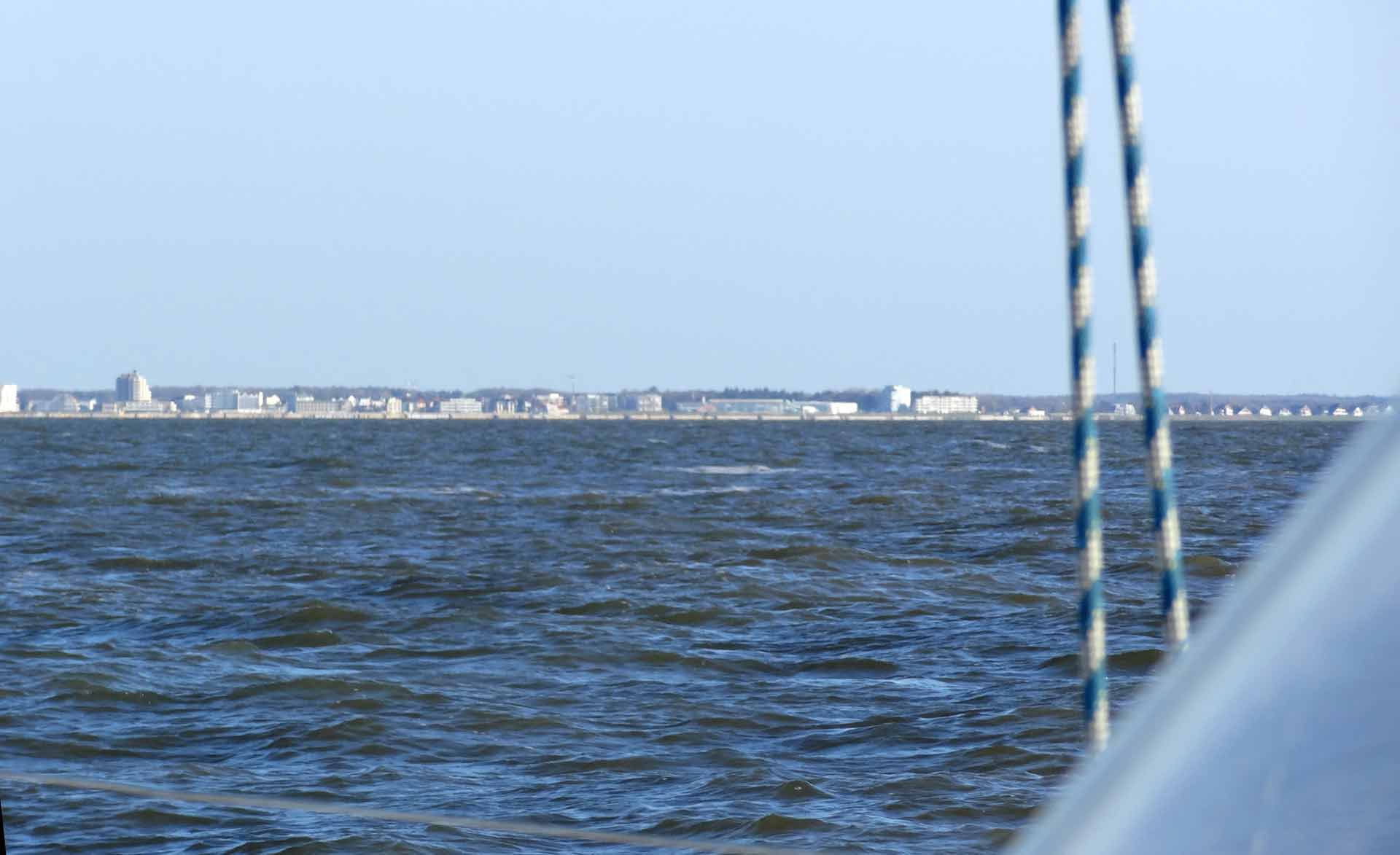
Finally, it was a sign of relief in the faces of everybody on board Pogo 1 as we sighted the shoreline and the – well – skyline of Cuxhaven. Strain began to fall, we could let loose the boat a bit, the others began to be a bit cheerful again as some of us had been down in the saloon to take a nap or just sit down reading, listening to music or stuff. As we sighted Cuxhaven we knew: We´ve not only managed to outsail Pogo 2 again but to make the best out of the difficult weather conditions sailwise today –Gennaker-sailing proved to be the right decision in the end. And hell, it was a load of fun sailing …
Secret of Gennaker Sailing: Speed Curving
As a Pogo 40 can hoist her biggest sail, a Spinnaker, and bring some 160 square meters sail area to the wind, we opted for the Gennaker with again impressive 107 square meters. It was such an awesome feeling having this sail providing speed today. But controlling a Gennaker is a special thing: Since this sail is due to it´s form and nature … let´s call it more instable than an ordinary sail it needs constant attention and a very potential of concentration. When a working Jib sometimes needs a trim here and there, you will apply corrections – veering and hauling – virtually all the time. Acting as bowman is at least as important as helming the boat.
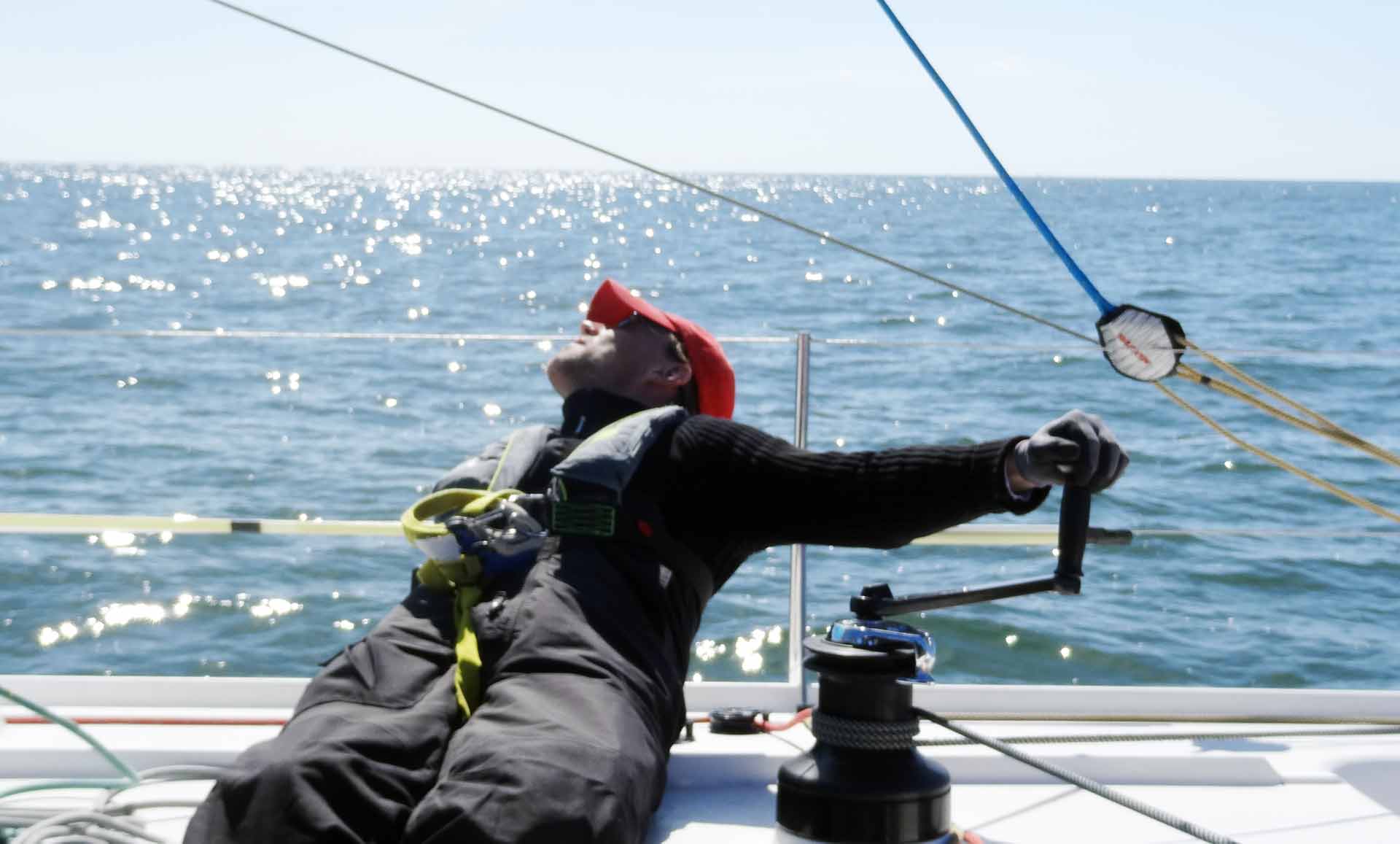
More than that: Bowman and helmsman have to interact and communicate all the time. Because a Gennaker will only unfold it´s full potential in a small range of perfect trim. And as Michael, our skipper once put it: “The difference of sailing right and shitty on a Pogo 40 is … 3 degrees.” But why´s the Gennaker so complicated? Well, the sheet isn´t cleated – the bowman will be riding the sheet from his hands, ready to veer or haul at a blink of an eye. At an instance. When the luff begins to kill – haul in instantly! Then slowly veer until the luff shows a slight tendency to kill again, a mere shiver. Than it´s perfect.
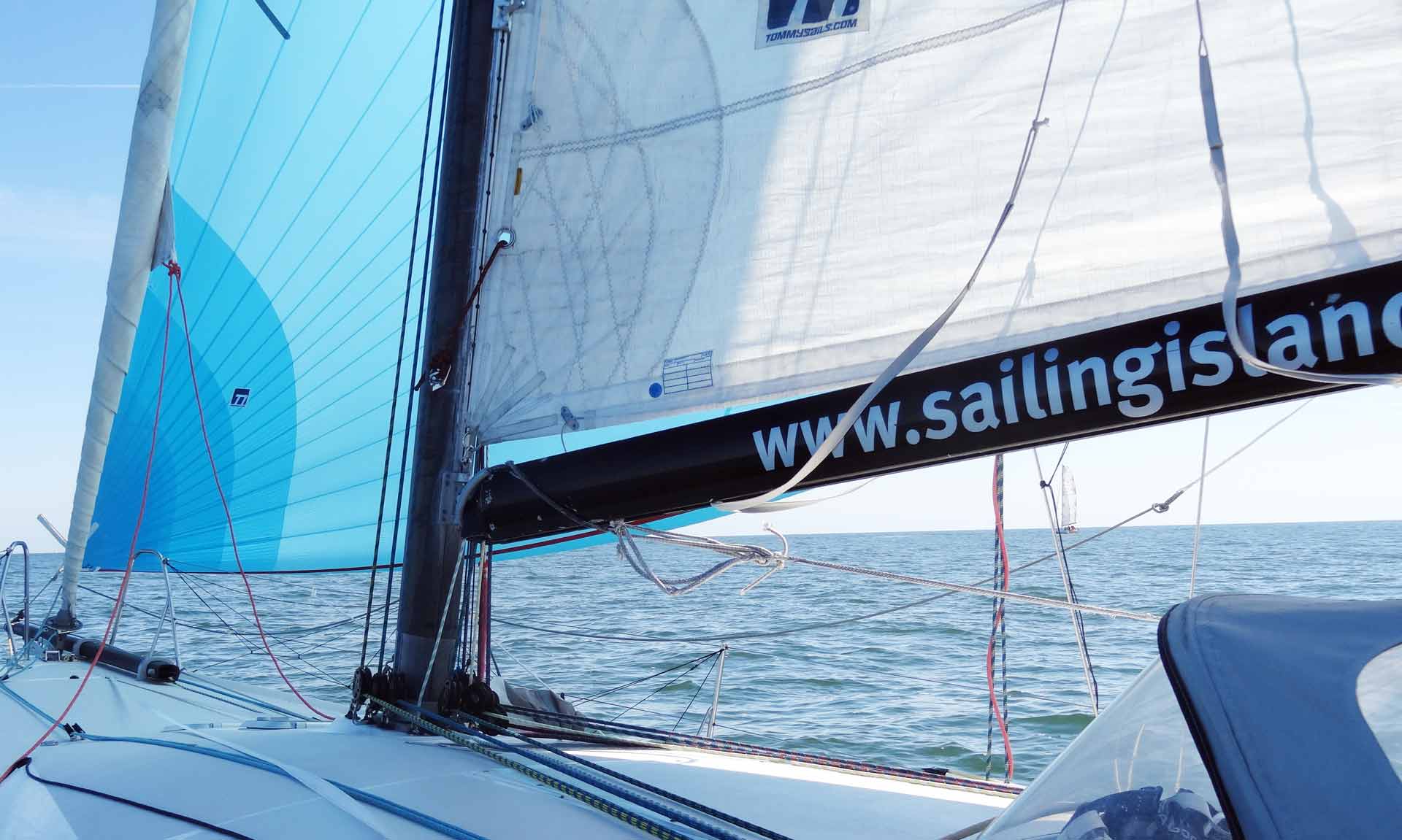
But starting some hours ago we´ve had a problem: The Gennaker would fill with enough air to be fully blown but speed has been slow. With not more than 3 to 4 knots true wind our racing machine didn´t want to go faster than 2 knots. What a shame! It gradually improved but again, having 9 to 10 knots true wind at my first watch we couldn´t seem to go faster than 5 or 6 knots. And then Michael appeared on deck and we got an impressive lesson in physics and clever sailing. He took a look abaft: We had managed to catch Pogo 2 already but had just a small lead by not more than 4 boat lengths. Then he told a secret: Speed Curves. “All right, helmsman …”, he said and as I had the rudder it was my turn: “Luff and bring the ship to the wind, bowman don´t veer, just let the ship pick up speed.” I did what he said and turned the rudder. Instantly the boat changed course – to the “bad” lee shore with shallow waters which we had to avoid painstakingly – gaining speed. 5 knots. 6 knots, 7, 8 knots …
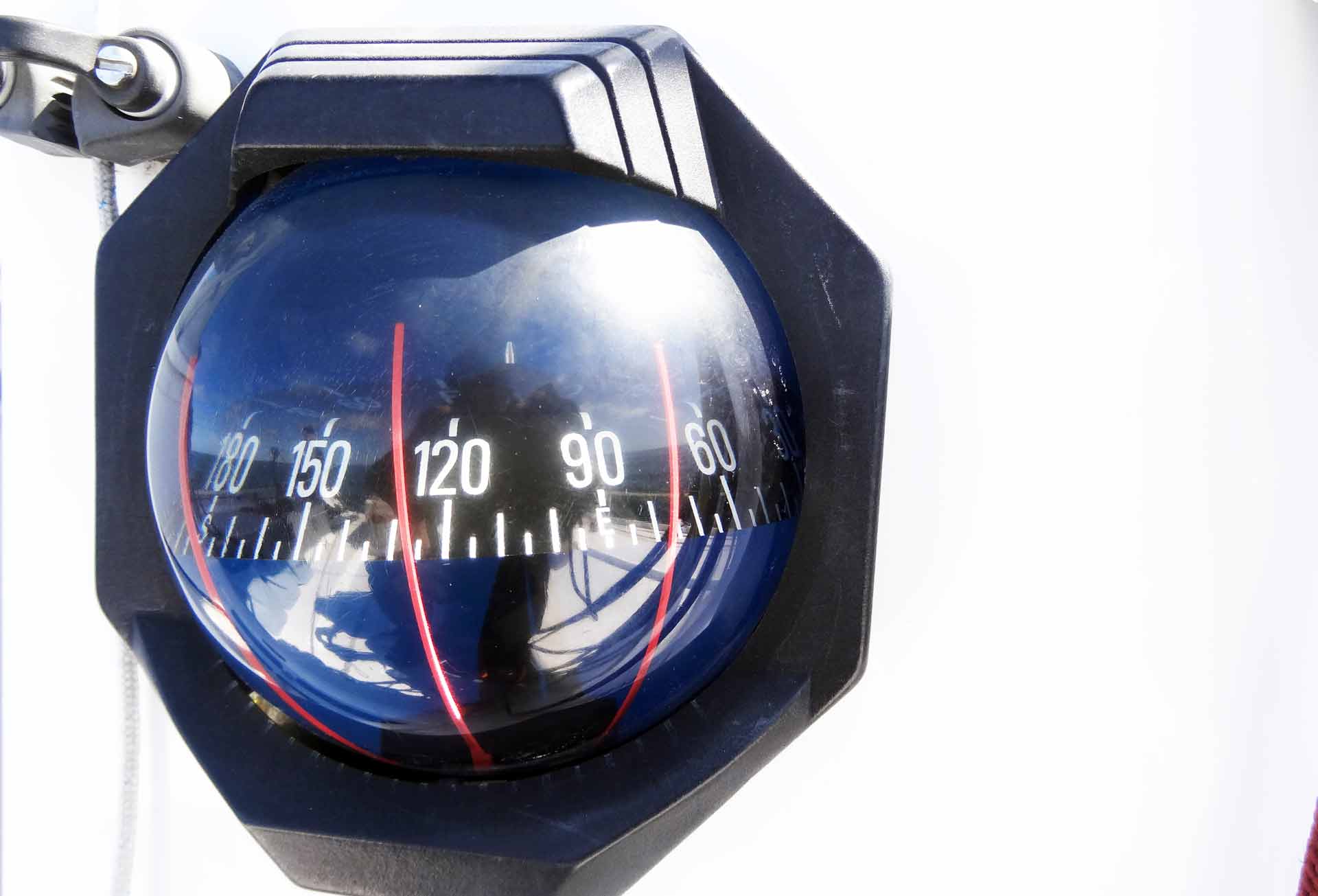
“Now slowly, very, very slowly go back on old course and try to take our own slipstream and catch it with our sails.” I just couldn´t grasp what he was talking about but did as he demanded and … the miracle happened: With a big smile I noticed that indeed our boat seem to somehow catch our own slipstream created by speeding up when luffed into the wind now in broad reach, filling the Gennaker and pushing the ship with a constant 7.5 to 8.5 knots over a period of some 30 seconds. I was puzzled. Just as the others were. So. It really worked. Speed curves. “Try again.”, he encouraged and again I turned the rudder to pick up speed just enough to veer to old course and have our slipstream filling our sails.
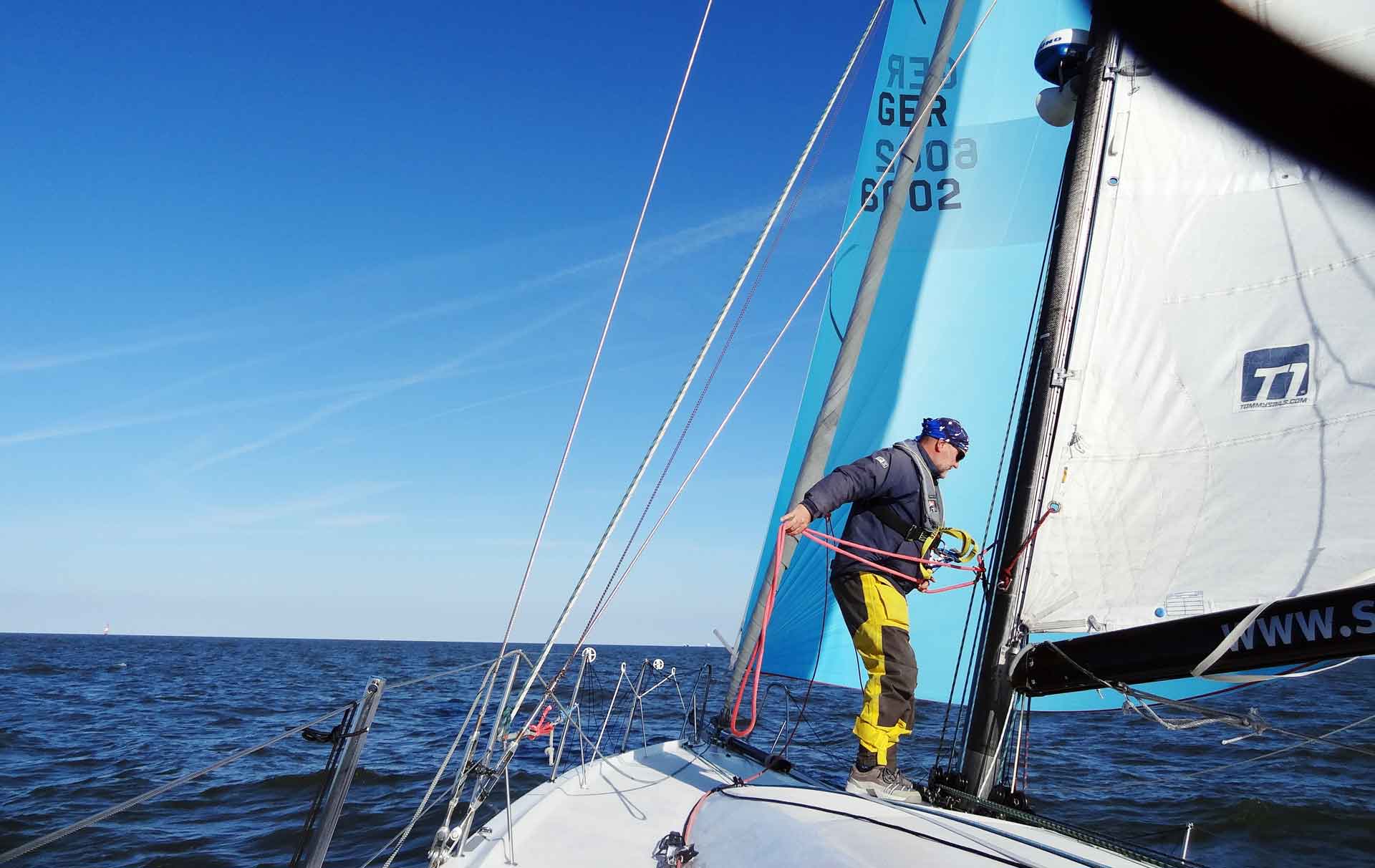
Wow! I luffed again by bringing the Pogo to a beam reach and again – it worked. Another time! Another time, again. I couldn´t believe it. Whilst sometimes I haven´t been able to execute the maneuver thoroughly and lost speed too early I managed to have the speed curve done just as neat as needed to maintain 8.5 to 9 knots for longer periods as well. It was a light bulb effect for all of us and we didn´t find words during the first maneuvers as we have been too much puzzled and amazed by this technique. “That´s the secret of Gennaker-sailing and it can be applied to every boat – Speed curves prove to be especially effective in conditions like these”, Michael explained and pointed abaft, our heads rotating: The distance to Pogo 2 had been increased to some 10 to 15 boat lengths. Out of nothing!
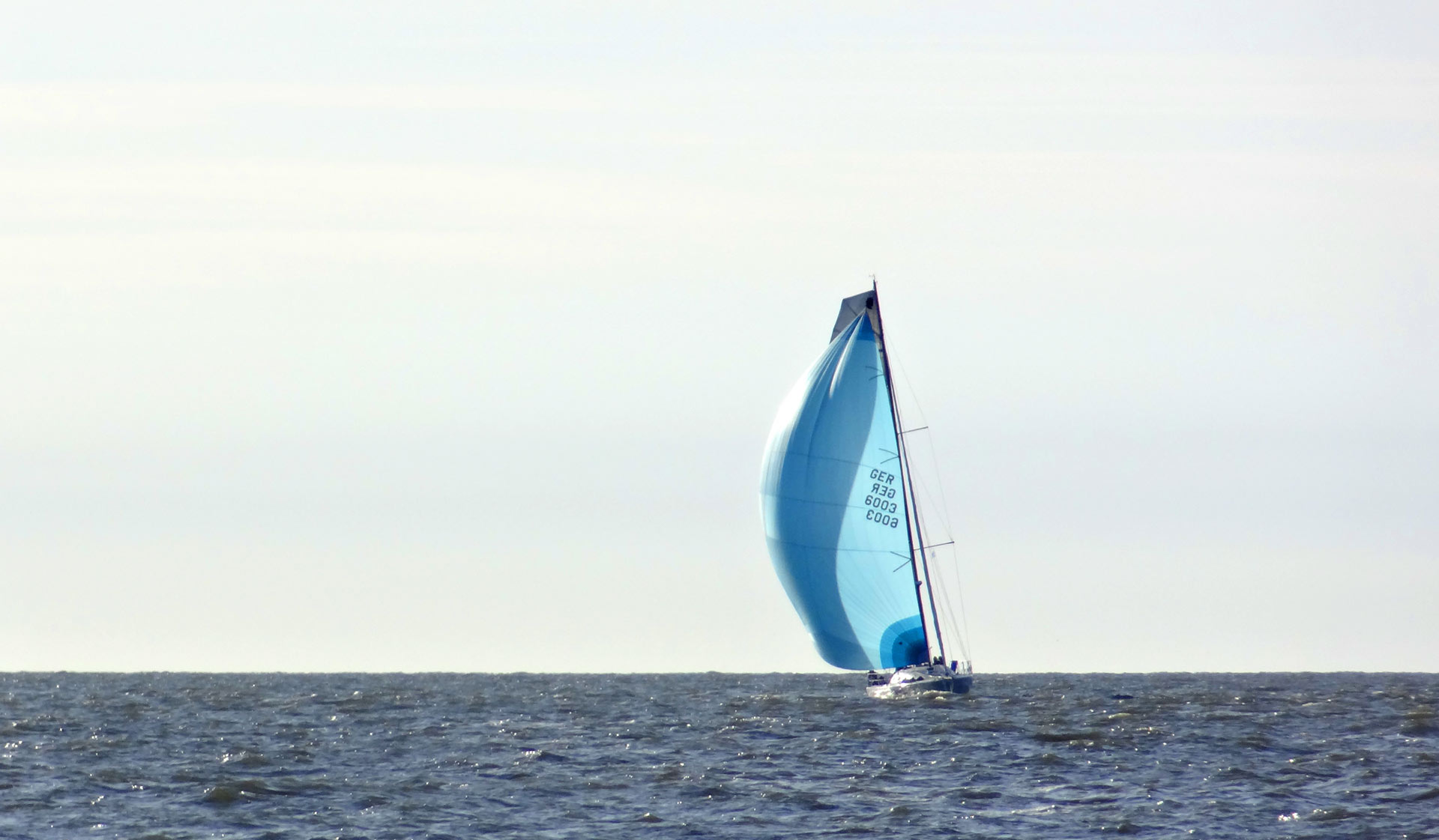
So again, after rotating and having the chance to observe the maneuvers whist not bound to be responsible for the helm, I was puzzled how neatly speed curves work. You really just have to pick up speed, generate momentum and go back to a broad reach and catch your own head wind in the sails and try to squeeze out as much speed as possible. When speedometer eventually go back to normal speed you luff her again and have the same effect over and over. It´s mind blowing and we could observe the effectiveness by having our Pogo 2 becoming smaller and smaller all the time in our wake. Truly a sailing lesson for advanced sailors. Some miles and hours earlier I still wasn´t so sure if we could ever reach Pogo 2 again this day and distancing her seemed almost impossible …
Racing against a Class 40 Yacht
We were behind Pogo 2. And virtually no winds at all to fill our sails. Nothing could be done. 4 boat lengths ahead we could hear our fellow friends and crew of Pogo 2 cheering. Their eyes on us, laughing and having fun: Finally today it seemed that they could be faster than us. They did have their sails hoisted slightly faster than us, being able to catch the light unsteady winds a few minutes earlier than we could – producing this advanced position. Oh my. Looser-Crew will have to pay for the beer upon arrival, that´s a golden rule. We don´t want to pay.
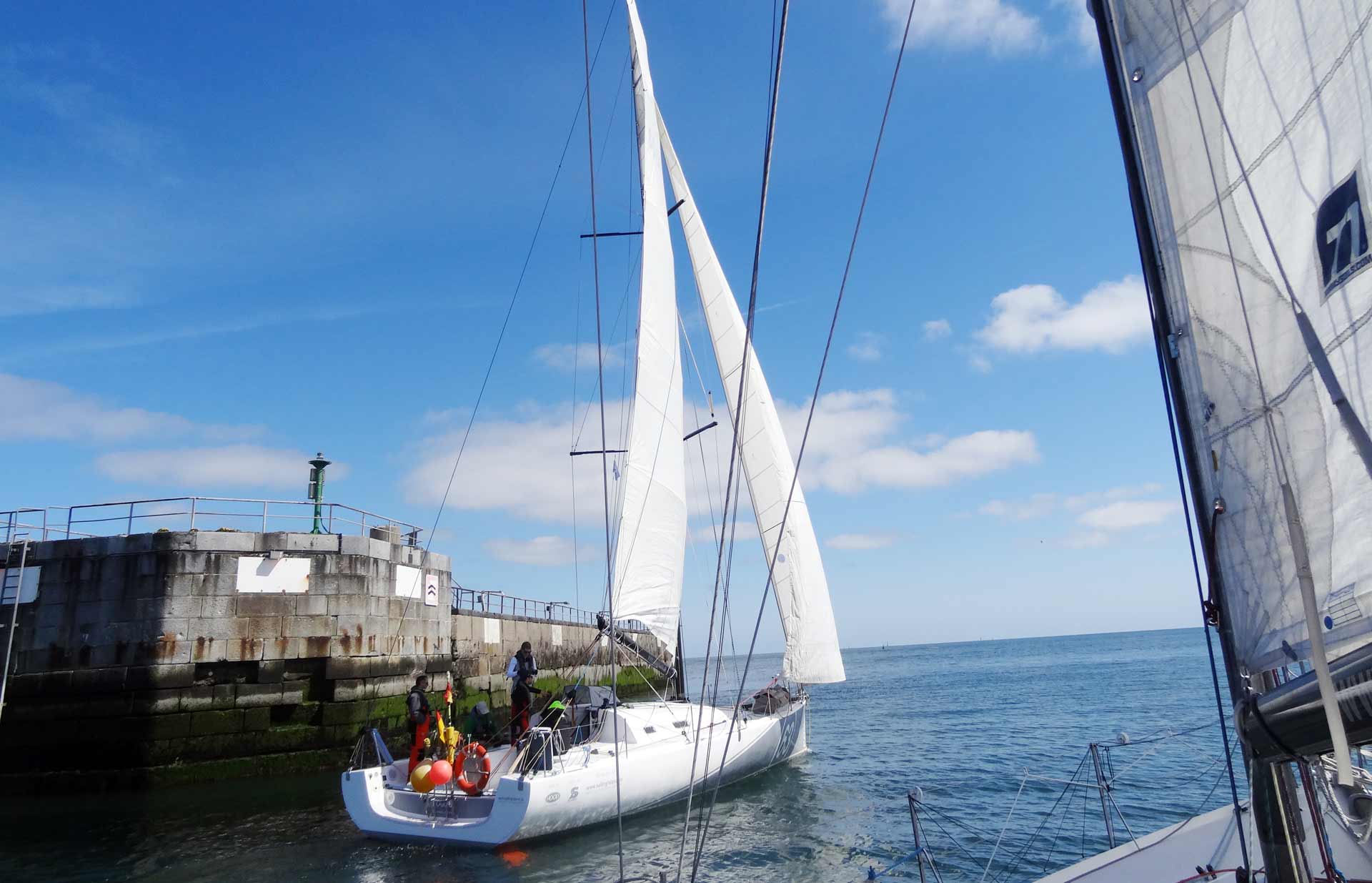
Winds did appear to blow from abaft which is normally the best point of sail for the Pogo 40 racing yacht – in a broad reach this boat will speed up to her highest velocities. But not today. When we left Helgoland marina and put out the engine there wasn´t more than 2 to 3 knots true wind. It was a kind of floating, not sailing. And the “chase” for Pogo 2 promised to take place in super slow motion. Every move on the helm could drop the ball and a waste of every smallest little breath of breeze instantly would cost velocity, bringing the ship to an almost standstill.
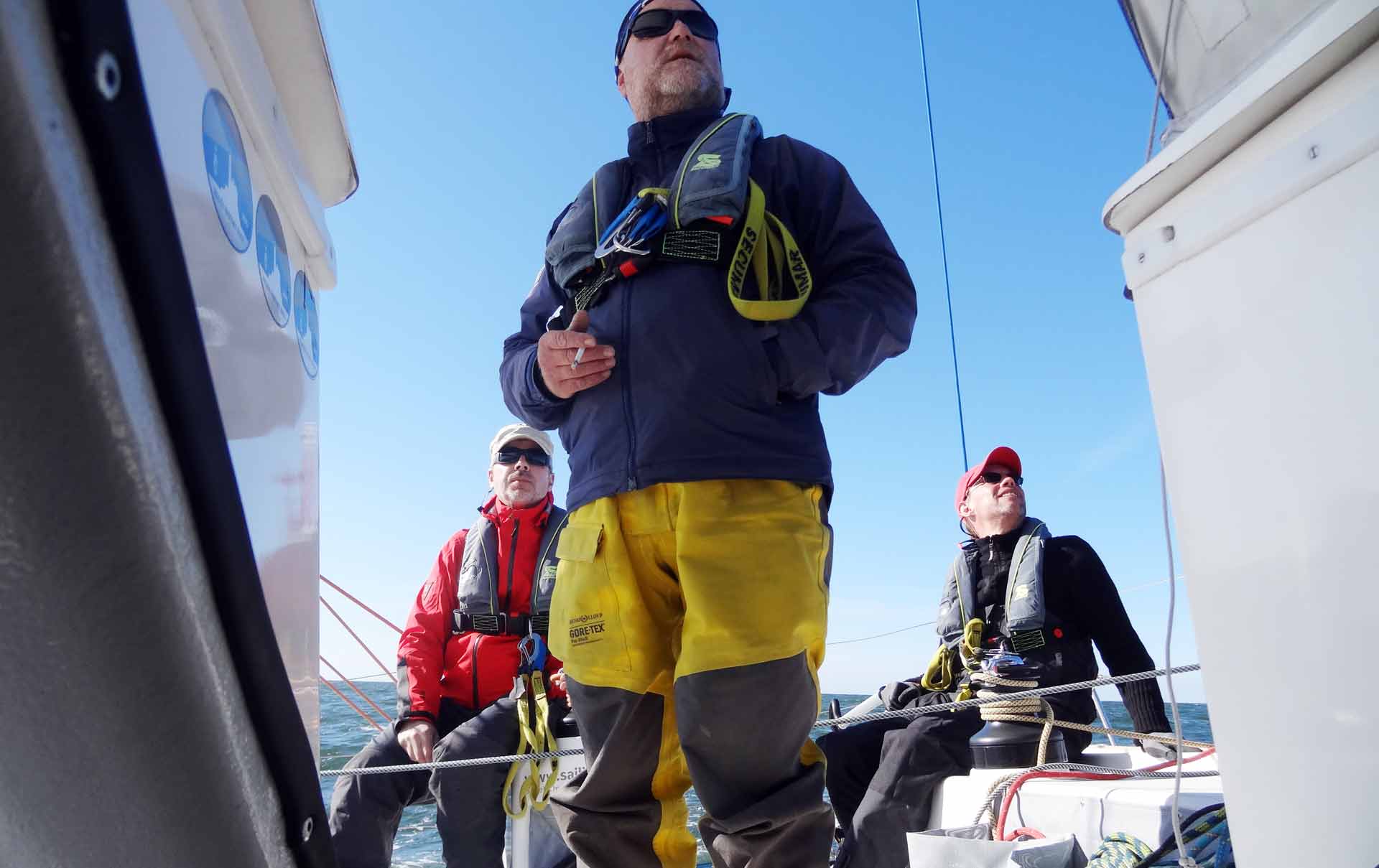
Nevertheless we began to make progress and slowly, very slowly, gain distance on Pogo 2. Eventually we managed to put ourselves to her windward side and meter by meter diminish her advance. Then it was us two on same height. Then we overtook her. By a centimeter or so. As we were still doing not more than bobbing up and down Michael came on deck, took a look at our instruments and his smartphone: “Wind will freshen up soon, not too much, but it will.” We all sat down in the large cockpit of the Pogo as Michael began to induct us into his plans: “We will put the Gennaker up and thus be ready for the moment when winds begin to blow stronger.”
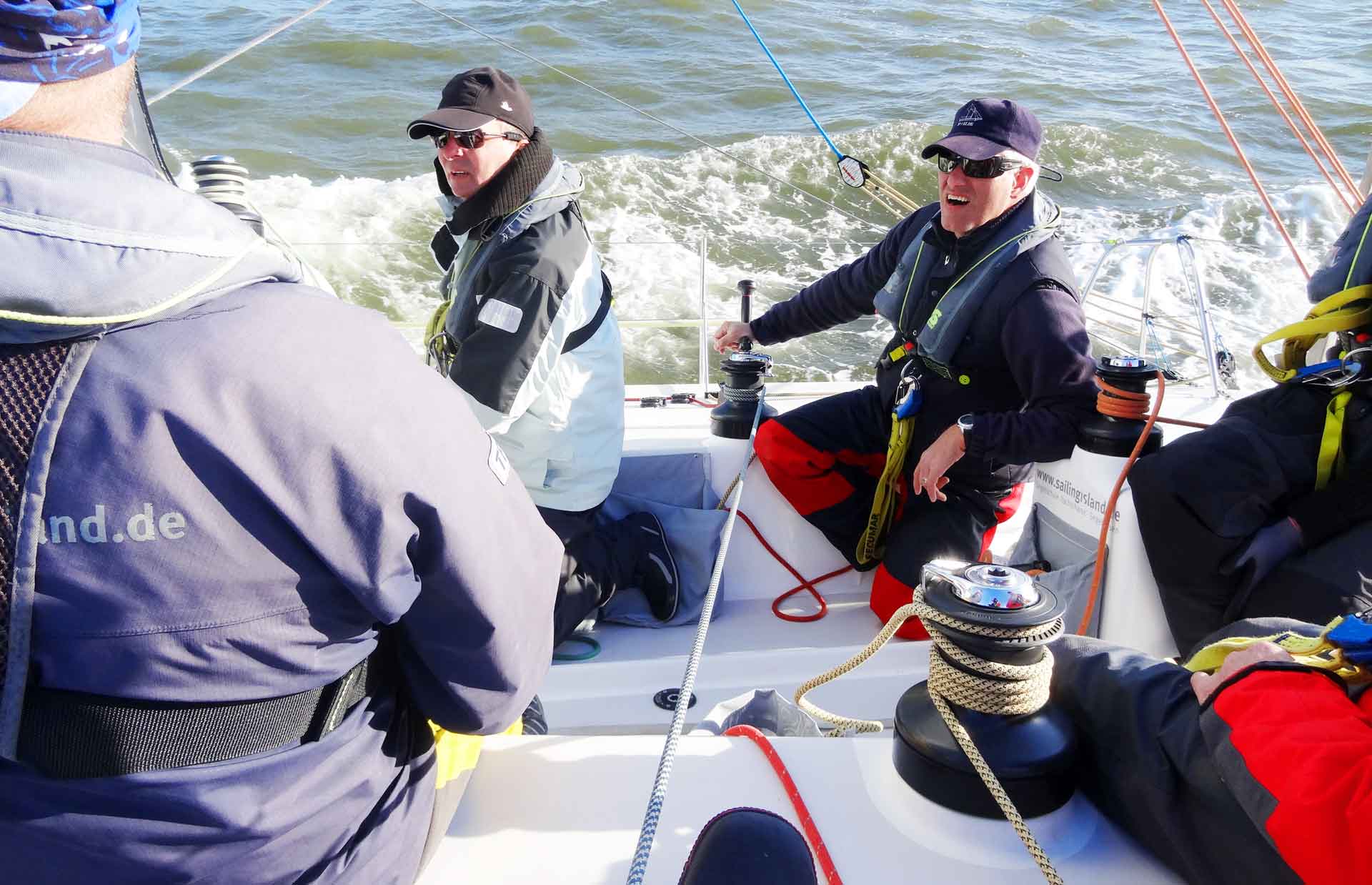
Michael briefly told what would happen next and how a Gennaker will be sailed: “In addition to the helmsman we need a bowman controlling the sheet – constantly”, he monished but at this stage we (well, I at least) didn´t knew exactly what that would mean. But we would learn soon. “Get ready to hoist Gennaker sail!”, he announced and keen on learning as much as I could I volunteered to proceed to the foredeck to grab the Gennaker halyard and upon his request began to pull. Meter by meter the black gazed cover with the plastic cap went up the mast, the blue Gennaker began to unfold … and it cramped. I couldn´t hoist reaching nearly half the mast height. Fuck!
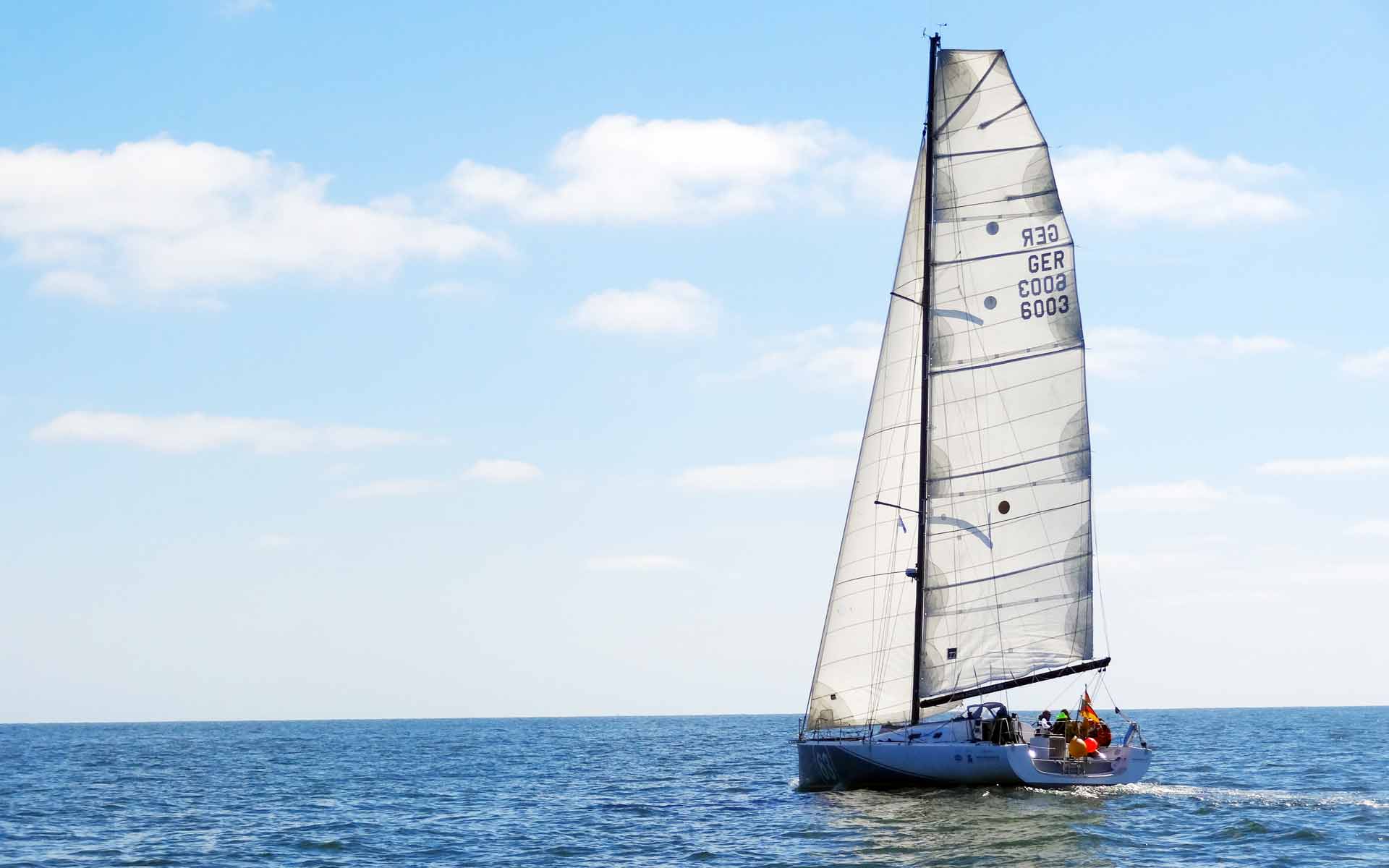
I tried everything by letting loose the halyard and tighten it again, bit the cover-hose wouldn´t climb higher than half the mast height. Michael was infuriated and so was the whole crew. “Take it down completely!”, he shouted and sprinted to my position on the fore deck as well. I took a brief look to Pogo 2: They did have a Code Zero hoisted and up in the wind perfectly. If we wanted to keep our advantage, we should get our problem solved very quickly. Upon taking the sail down completely Michael instantly acknowledged the fault: The Gennaker hasn´t been packed thoroughly by our precursory crew and under some very nice curses Michael was able to untie a few knots and get everything assembled in a matter of minutes: “Get the damn thing up!”, he shouted breathless and with all of my weight I pulled the Gennaker up, hoisted the hose and there it flew – big and blue.
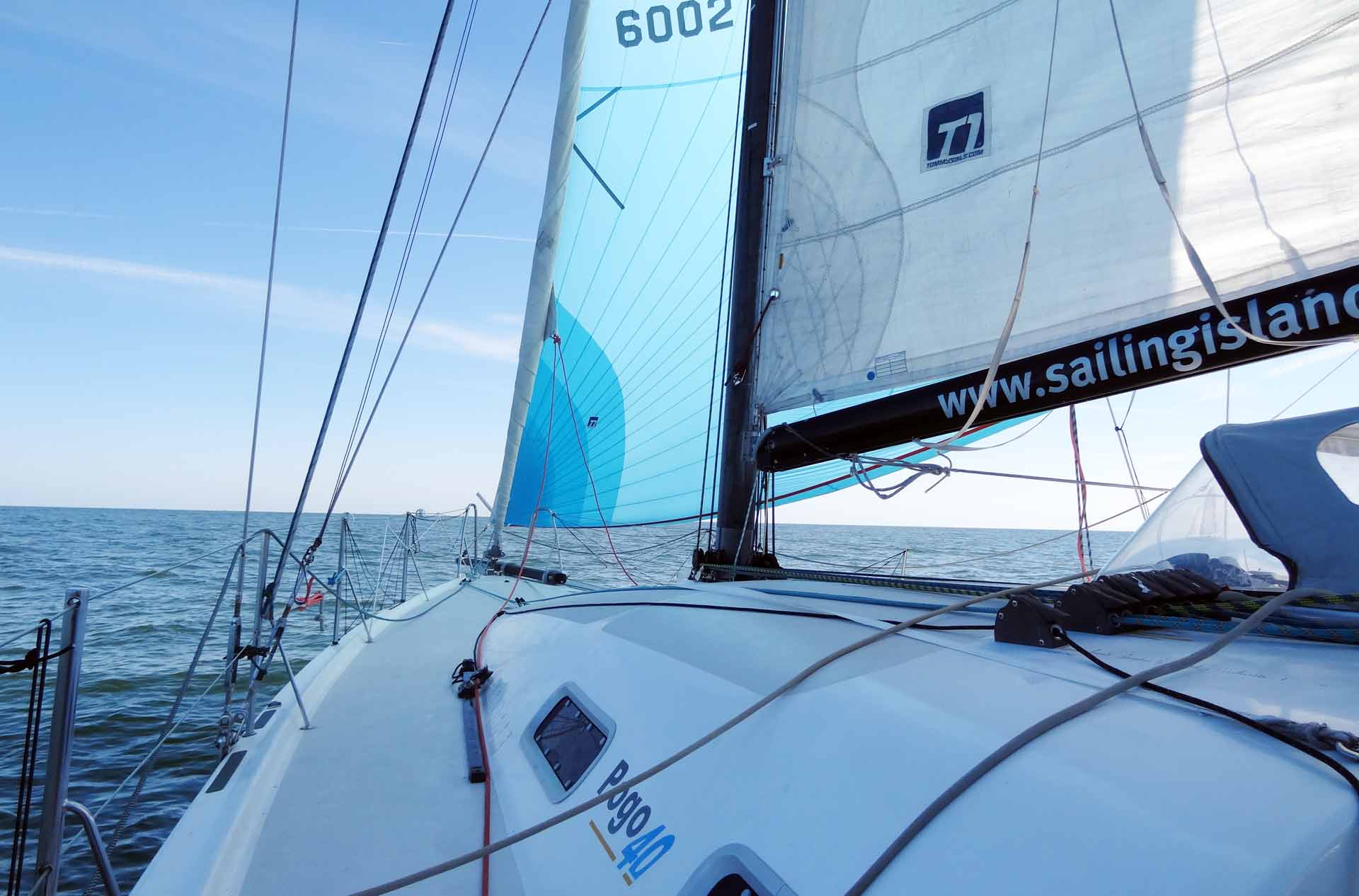
Our boat increased speed measurably though as wind speeds stayed low I cannot say we made a huge leap. But at least we didn´t lose distance to Pogo 2 anymore. Wind would increase its power over the course of the coming hours and we would slowly begin to get more distance to Pogo 2, but it wouldn´t be up until Michael showed the secret of the speed curves until we would really begin to speed up and make real progress. Sailing under Gennaker with increasing winds by performing the speed curves would go on until reaching Elbe estuary with nice wind speeds and a maximum velocity of believe it or not 13.8 knots. Thanks to the Gennaker and Michael´s speed curves. Something our crew couldn´t have imagined a few hours earlier when we prepared the boat for casting off …
Getting the Gennaker ready
I do know indeed what an asymmetric Gennaker is and when this type of sail is utilized on a sailing yacht. I´ve read a number of books and I know in theory what this is all about. But to be honest, I don´t have a clue what Gennaker-sailing means in practice terms and so I was amazed when Michael said during breakfast that chances could be fair to have a day with this huge sail hoisted to pull us to Cuxhaven.
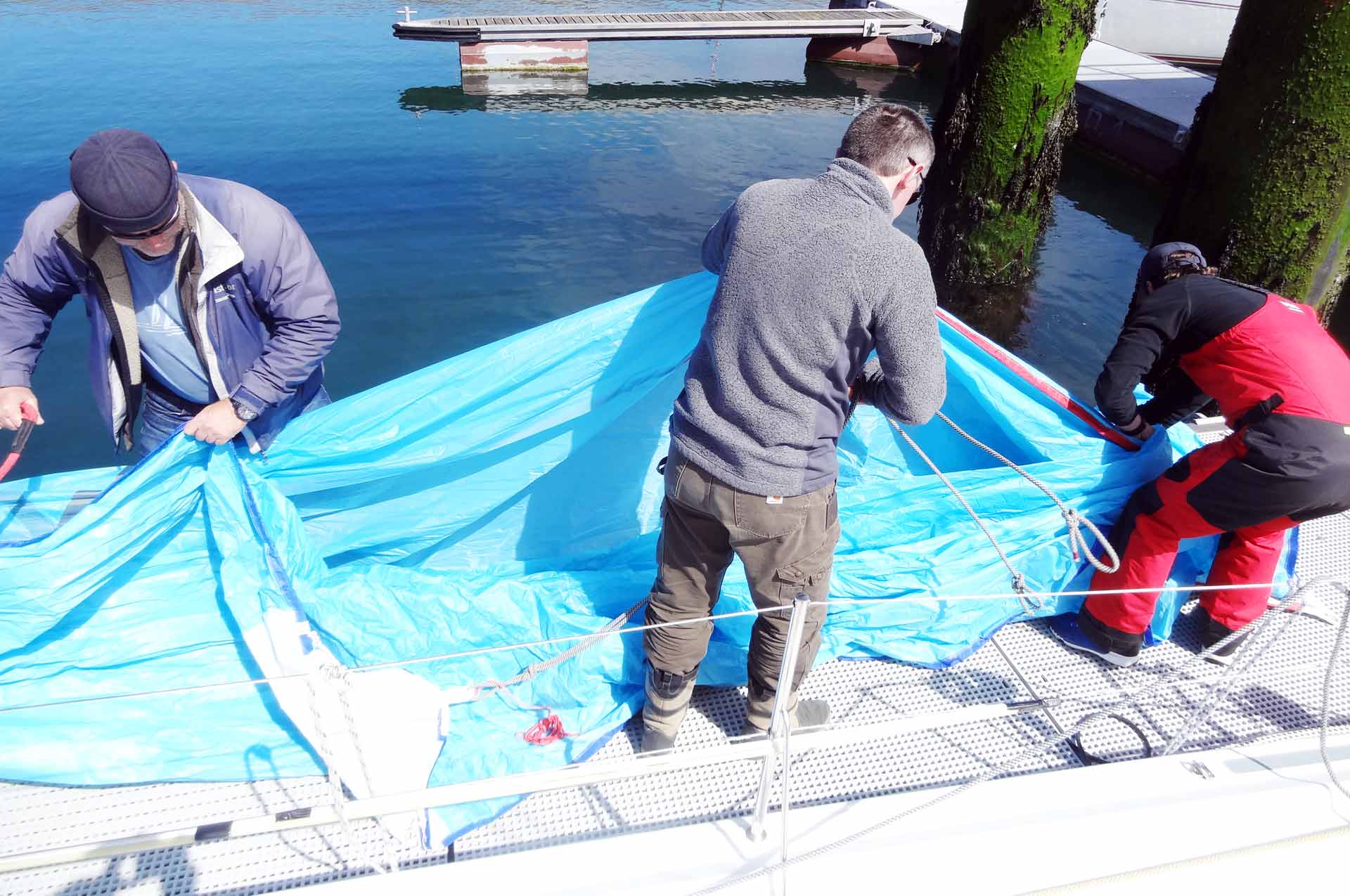
As our own Gennaker had been already packed by the crew that chartered Pogo 1 before us everything was fine with our sail. We thought. So we helped the crew of Pogo 2 to have their Gennaker packed. For this procedure, the sail is laid down on the pier for its whole length – and a more than 100 sq. meter Gennaker for a Class 40 racing yacht is huge! – and then someone will have luff and leach put together, the sail-garment folded in between. It´s a process that needs attention and precision because hoisting a Gennaker is a maneuver of seconds and can only be performed well when packed thoroughly in advance. It had something of a guy packing his parachute …
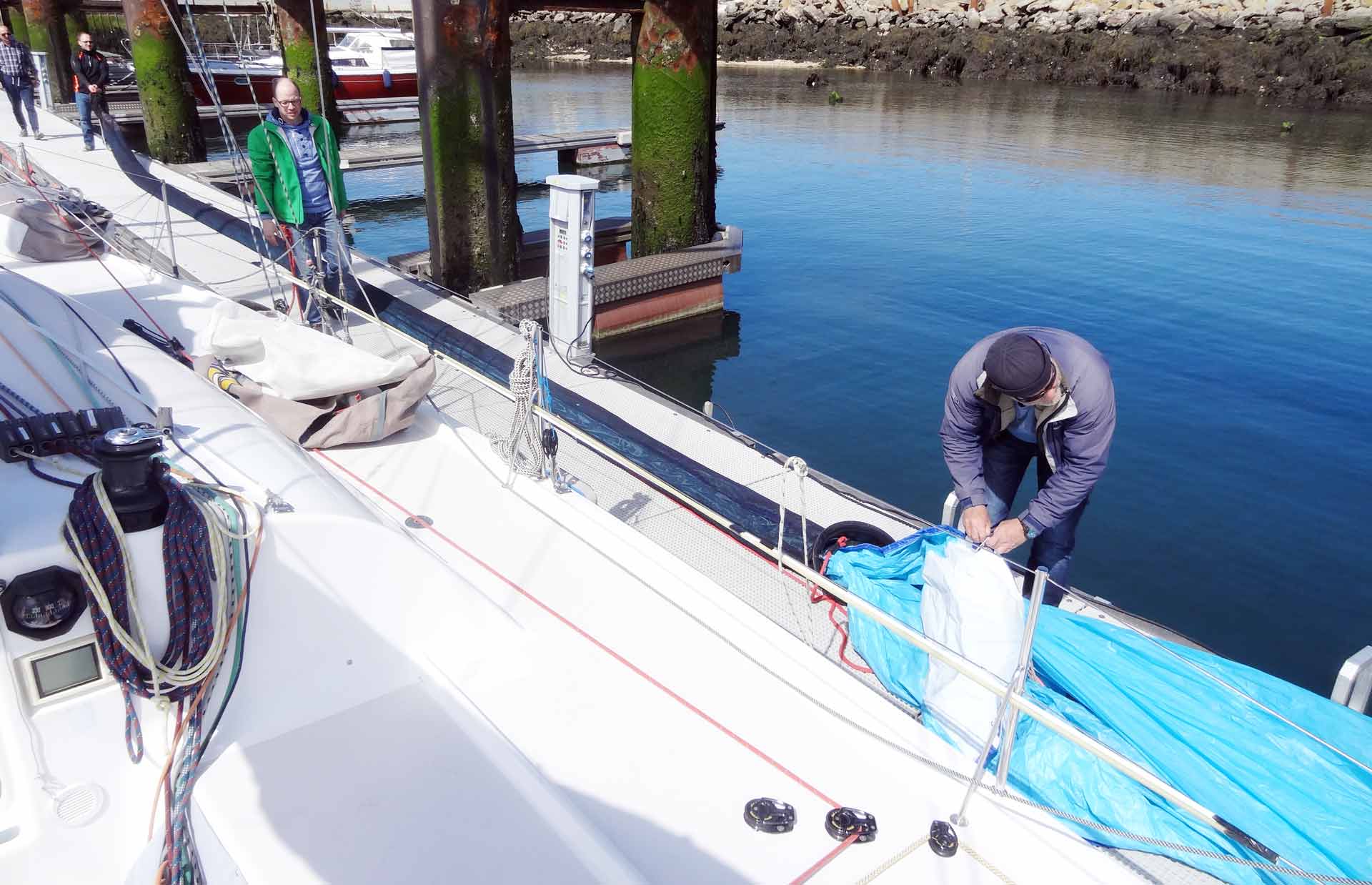
After having done so, the black gazen hose is gently pushed to mantle the Gennaker. Then the sail will be folded accurately leaving both the outhauls and the head out of the big rucksack to be attached to the halyard and sheets quickly on the fore deck prior hoisting. We helped the crew of Pogo 2 to have their sail packed thoroughly – apart from the fact that they later when underway tried an hour or so to run under Code Zero until they finally switched to the Gennaker costing precious time again. But this all I couldn’t knew when somebody´s clock was ringing and the day started …
Good Morning, Helgoland!
I wasn´t the first to get up the one who prepared the most important thing when men get up: Coffee! I love this smell of Propane burning and fresh coffee brewing, an odor that will ultimately cause everyone no matter how deep the sleep and nice the dream to wake up in the end. So did the crew of Pogo 1 at 8 o´clock this beautiful sunny Sunday morning: Two of us went to the bakery to catch some bread. Second day and our crew worked perfectly.
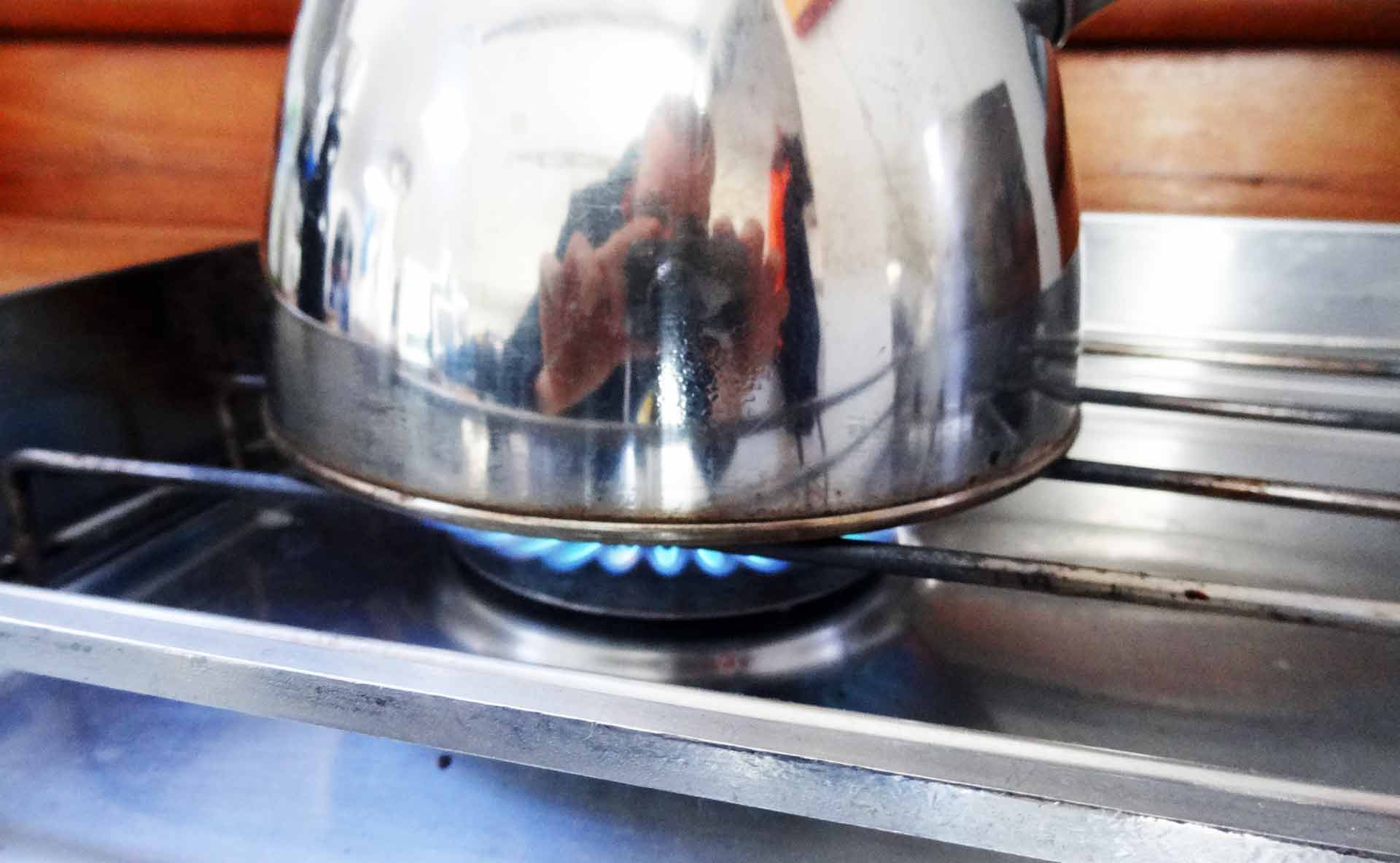
Peter and Jens did occupy the fore cabin and it was the smell of the beloved coffee which I think got them to get up. Yesterday evening we´ve had a nice small dinner in one of Helgoland´s restaurants with two, three or five pints of beer and a handful of schnapps (not all of us I must say, myself included) and so I guess having a strong coffee was bitterly needed to get thing in order a bit. Sleeping time ended, sun climbed high already.
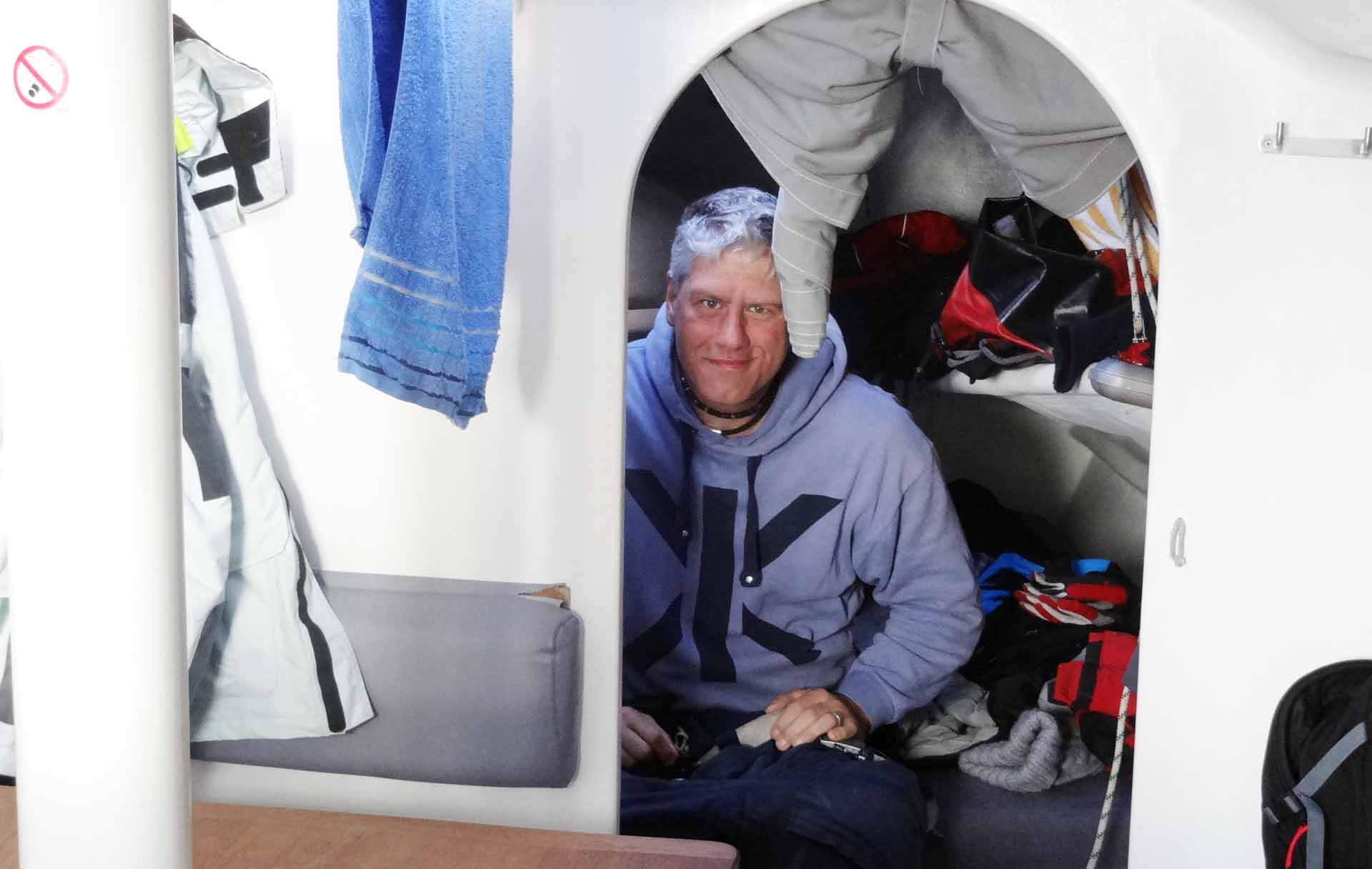
Speaking of getting up: I again had a nice good night´s sleep. Though a Pogo 40 might not spray the charme of a luxurious Hallberg-Rassy and wouldn´t look very cozy to most of the people by lacking wooden panels or nice veneers, it still offers plenty of space and in the end that´s what counts most in my eyes. Having had the pleasure to occupy the aft cabin with Oliver I must say I felt a lot of room, headroom as well, plenty of space for me to find a nice sleeping position and it all was just perfect.
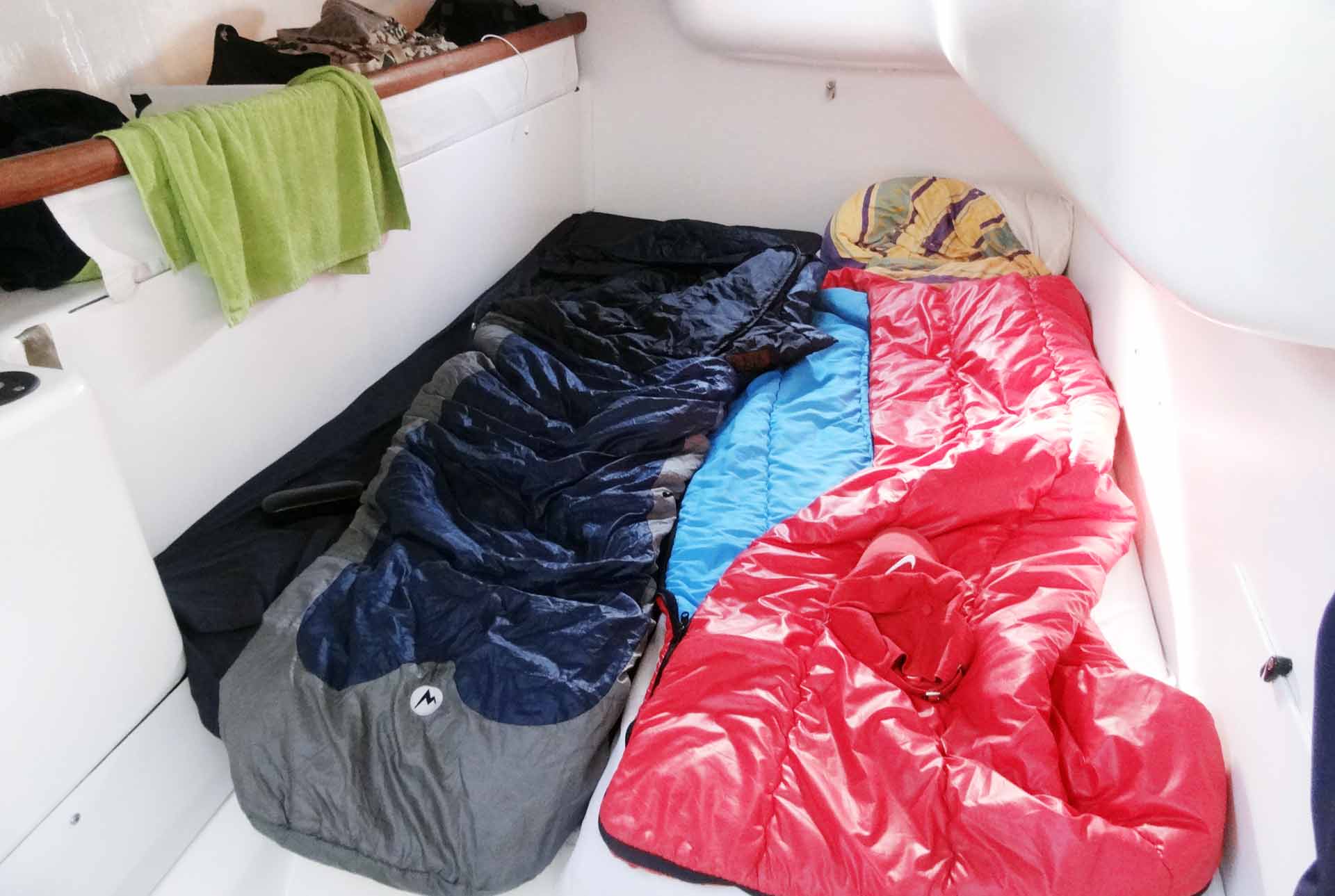
After breakfast Michael got the latest weather forecasts and wind conditions and calculated our route, planned all course corrections by waypoints in advance and calculated the ETA, setting our time to cast off to 2 p.m.. So that meant plenty of time for the crew to have a walk over Helgoland, stroll around or just enjoy the nice weather as we had the first real warm and sunny days of 2016. Peter went to a trip to the neighboring island of Düne where a colony of seals lives and brough back pretty impressive pictures, the rest of us took a 3 hours walk around the island itself.

Returning to the boat it all went too fast: Casting off, steaming towards the entrance to the harbour and switching off the engines: “Two men to the halyards ready to hoist main sail!”, said Michael and again I volunteered to have the stressful backbreaking work done. I love working on ships!
Steaming alongside Pogo 2 we couldn´t imagine what this day will bring: A near calm, a slight breeze and slow win against our adversary, slight sailing with a Gennaker under increasing wind speeds. The wonder of Michael´s speed curves and in the finally a race into Elbe estuary with some 14 knots ending in a speedy, bumpy ride with high concentration and huge efforts to control the big sail – and finally an outcry as Pogo 2 – under such pressure to reduce distance – did a miscalculation and having a broach with all sails killing … what a perfect day of sailing again!
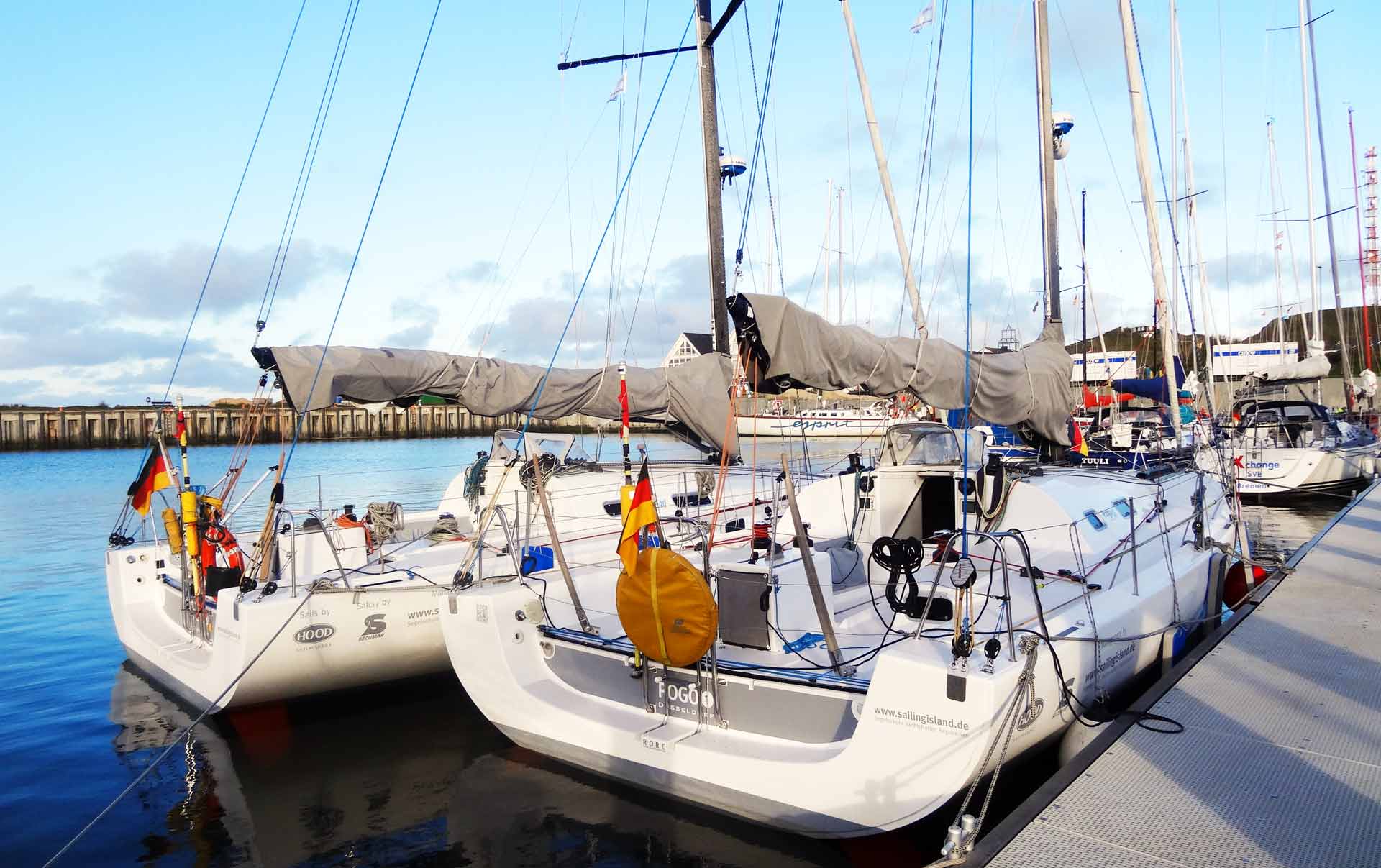
Of all this I couldn´t know when I got up this morning and took a walk in the sun, breathing the salty fresh air of Helgoland and the North Sea and taking a look onto the wide stern of our impressive sailing machine, the marvelous Pogo 40. But this far I knew: Sailing this boat is something so pristine and exciting that I can barely hold myself from asking my fellow crew mates this one question: Anyone in for another trip on this thing?
Not one declined.
